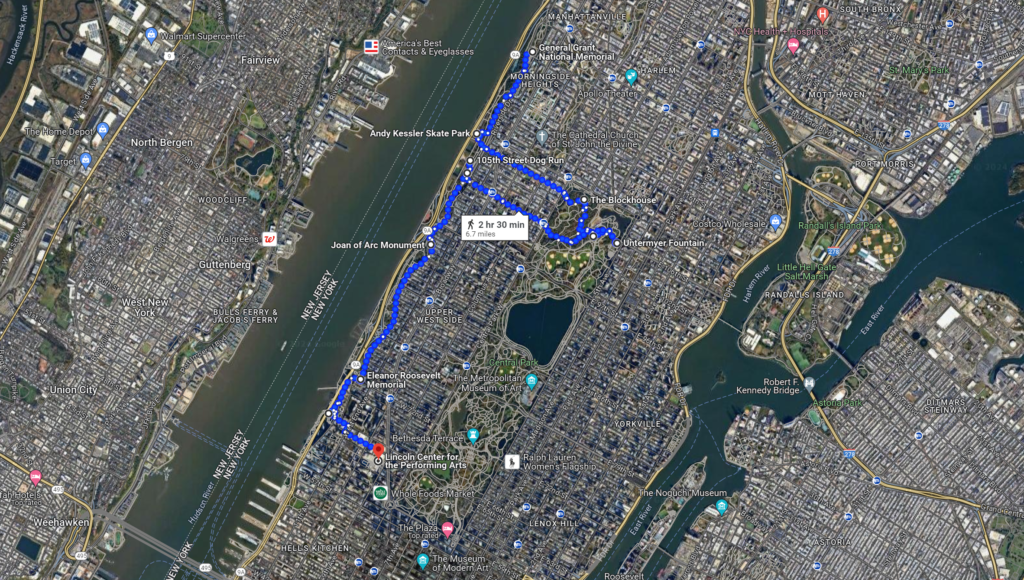We kicked off the day in Jersey City, catching the PATH train to the World Trade Center.
From there, we hopped on the subway and headed uptown. The ride was interesting, especially when the subway briefly surfaced, giving us a rare glimpse of the city’s skyline before dipping back underground.
Our main destination was the General Grant National Memorial, but we made a poignant stop along the way.
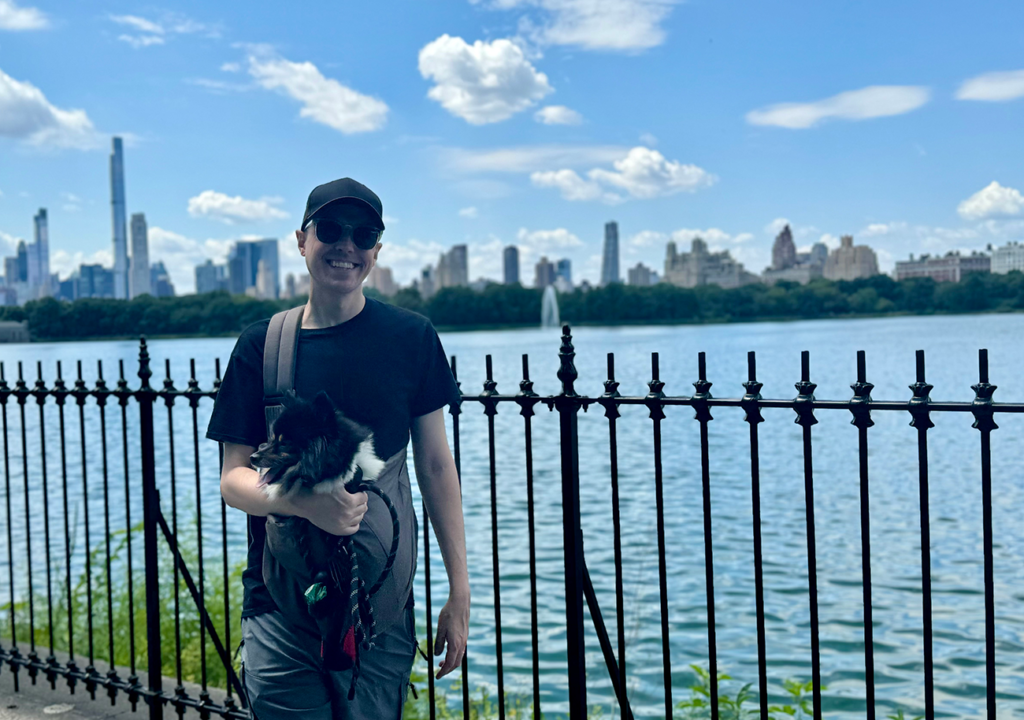
Table of Contents
The Amiable Child Memorial
Before reaching Grant’s Tomb, we stumbled upon the Amiable Child Memorial.
It’s a small, easy-to-miss monument, but it holds a tragic story.
This memorial marks the grave of St. Claire Pollock, a young boy who died in 1797 after falling from cliffs near the Hudson River. His grave is one of the few private graves left on public land in Manhattan.
The contrast between this small memorial and the grand structures nearby is striking. It’s a somber reminder of life’s fragility in the middle of a bustling city.
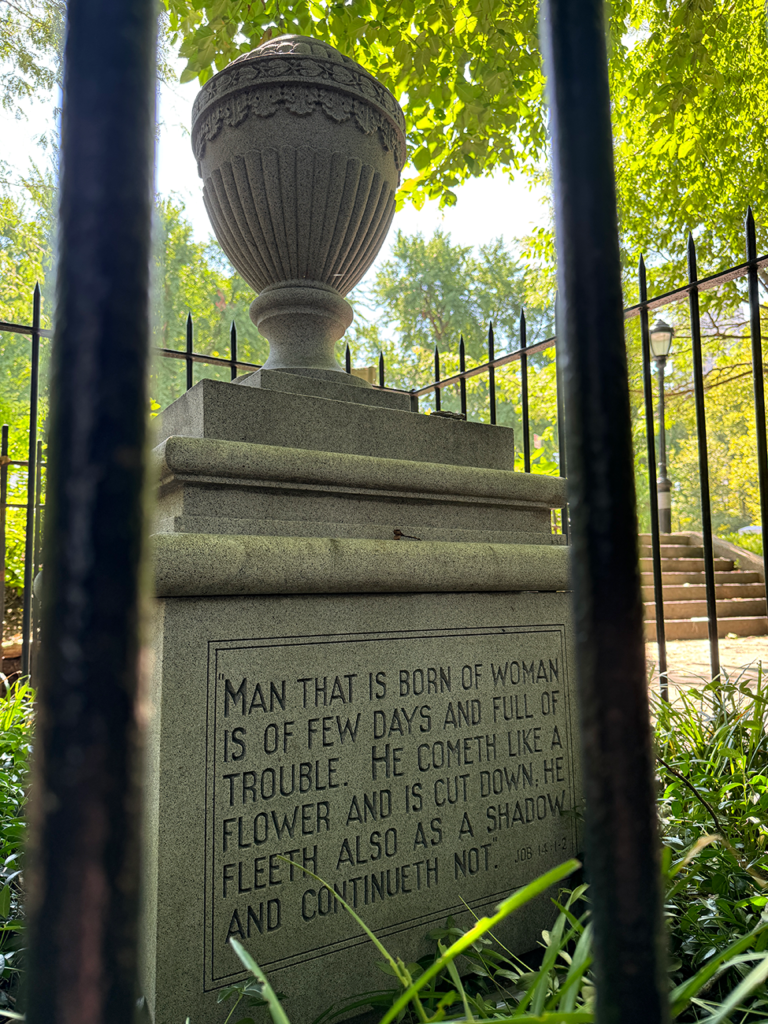
Exploring Grant’s Tomb
When we arrived at the General Grant National Memorial, its sheer size took us by surprise.
Completed in 1897, this is the largest mausoleum in North America.
It was built to honor Ulysses S. Grant, the next in line and 18th President of the United States, and his wife, Julia Dent Grant.
The structure is modeled after the Mausoleum at Halicarnassus, one of the Seven Wonders of the Ancient World. Grant, a Civil War hero and two-term President, was a figure of immense national pride. When the tomb was completed, it became one of the most visited sites in New York City.
Inside, the tomb is simple yet powerful.
Inscriptions remind visitors of Grant’s dedication to preserving the Union. A little-known fact about Grant: during the Civil War, he smoked up to 20 cigars a day. This habit became part of his image, but sadly, it also contributed to the throat cancer that claimed his life in 1885.
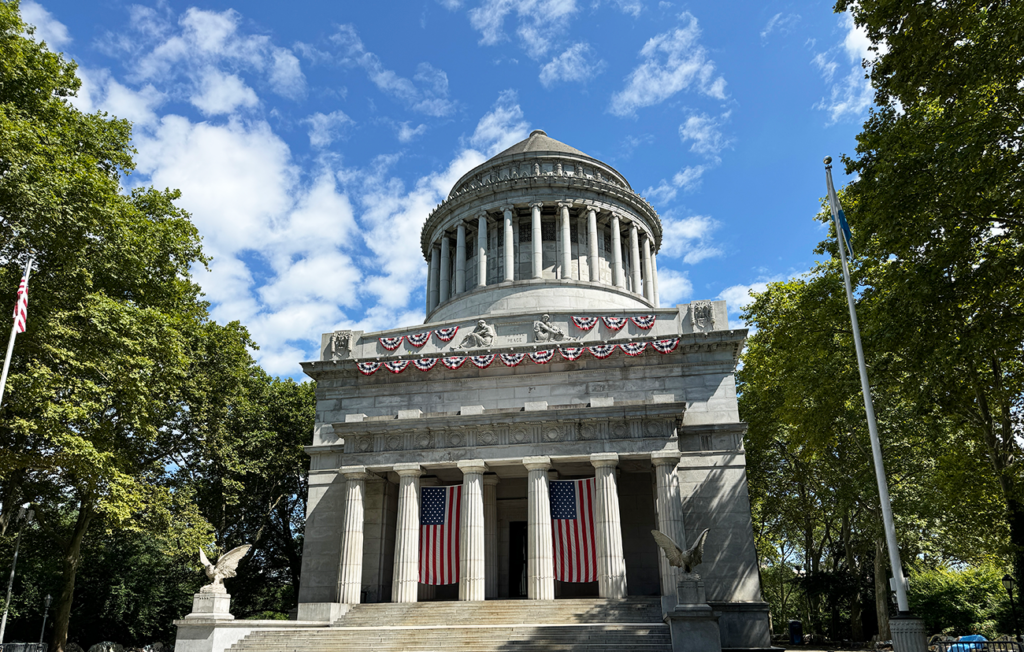
Walking Through Central Park’s History
After visiting Grant’s Tomb, we headed over to Central Park.
Our first stop was the Untermyer Fountain, a bronze sculpture that adds a touch of classical elegance to the Conservatory Garden.
The garden itself is divided into three sections—French, Italian, and English—each with its own style. We continued our historical tour by visiting McGowan’s Pass, where Fort Clinton once stood. This fort played a crucial role in defending New York City during the War of 1812. Today, not much of the fort remains, but a plaque and monument mark the spot where history unfolded.
Finally, we took a moment to reflect on Seneca Village. This predominantly African-American community thrived in what is now Central Park before the city evicted its residents in the 1850s to make way for the park. Though there are no physical remnants of Seneca Village today, its legacy is important to the park’s history. Worth noting and not to be forgotten!
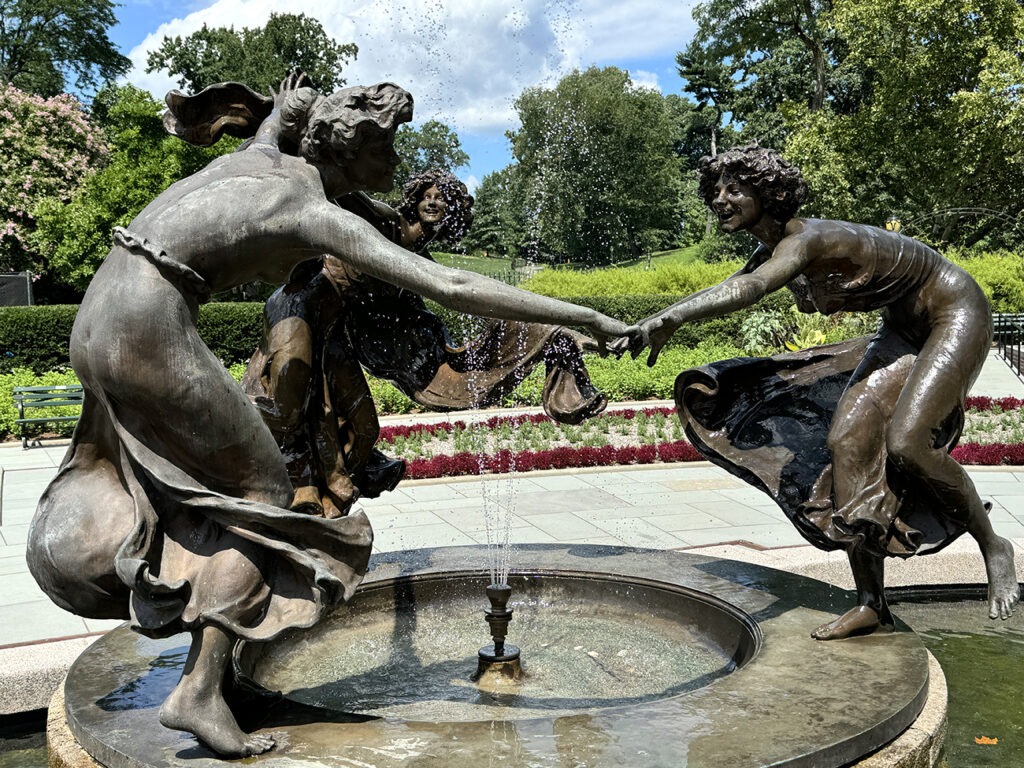
Want to complete this same 6.7-mile hike?
Click here to view the turn-by-turn on Google Maps.
